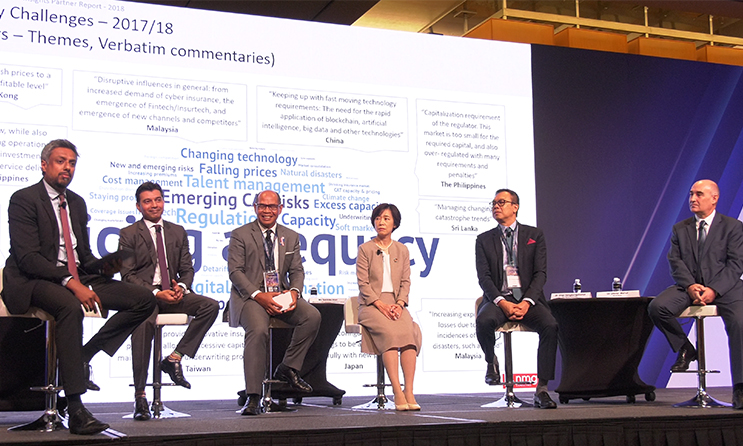Greater consistency in regulations required

Amidst the discussions on pricing adequacy and closing the protection gap, the Asian reinsurers representing the industry at yesterday’s panel discussed how regulation in the region could be improved to lubricate insurers’ efforts for better customer protection.
“The legislation in certain jurisdictions may have certain prohibitions, before you can utilise some distribution channels. Some of the guidelines and regulatory frameworks could be removed in order to make it more efficient for insurers to provide some of the much-needed products, at the most affordable premium and through the most efficient distribution channels,” said Malaysian Re president and CEO Zainudin Ishak.
This is where some of the opportunities for public-private partnership lie, he said, for governments and the industry to work together to come up with better regulations that puts the consumer first. The notion was echoed by Mitsui Sumitomo Insurance general manager and head of global PPP unit Sachiko Hori, who indicated that deeper and more honest communication with the regulator was necessary.
“The regulators have their own thoughts and priorities. They are thinking about the changing nature of society, the different circumstances that cause a change in attitudes, and how they can tackle all of that,” she said.
Access to information forces more government action
Given the power of social media and how much information the average person has access to, news about natural or man-made disasters can spread around the globe in a matter of hours.
“Governments used to be able to keep news of these incidents under wraps, which allowed for their handling to disaster recovery to be quite inept,” said ACR Capital group CEO Bobby Heerasing. “Not anymore. People now are demanding far more of their national, state and federal government in terms of how they react to disasters. This will, in turn, drive the demand for more forward-looking and risk managing solutions for disaster financing.”
Implementation of new regimes and standards require a careful timeline
With IFRS17 and RBC2 just around the corner, Thai Reinsurance CEO Dr Oran Vongsuraphichet cautioned for a more careful adoption process. “We have to be careful of how and when we can adopt these new standards. And when you say when, you probably can’t say the next two or three years. There may be some factors around the industry which cannot support what we have to do, according to the new standards or regulations.”
While insurers do not have an option when it comes to IFRS17, the industry should look at how they can adjust these timelines and processes to be relevant to each market and have these discussions with the regulators.
“There is an enormous amount of work involved in implementing IFRS17,” said Mr Heerasing. “We have great relationships with our regulators, but I think they should have waited when it comes to regulatory regimes, because we would like to have more consistency, from a regulatory perspective. For those of us who have multiple branches or offices in different jurisdictions, if the regulators could have a little more consistency in how they look at us as a community, that would be helpful.”
While there has been greater harmonisation across ASEAN regulators, there is still some fragmented approaches in certain areas, leading to worries about protectionism in certain nations.